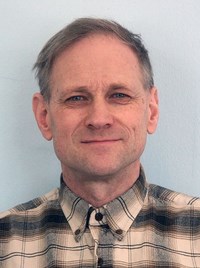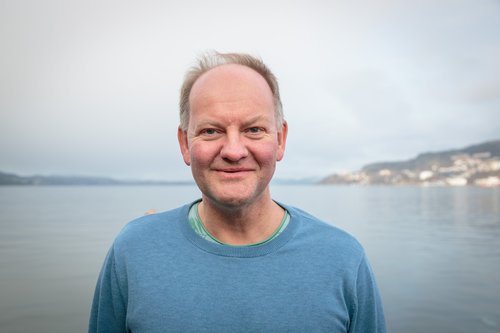Integrated Arctic Observation System (INTAROS)
Summary of the project
The overall objective of INTAROS is to develop an integrated Arctic Observation System (iAOS) by extending, improving and unifying existing systems in the different regions of the Arctic. INTAROS will have a strong multidisciplinary focus, with tools for integration of data from atmosphere, ocean, cryosphere and terrestrial sciences, provided by institutions in Europe, North America and Asia. Satellite earth observation data plays an increasingly important role in such observing systems, because the amount of EO data for observing the global climate and environment grows year by year. In situ observing systems are much more limited due to logistical constraints and cost limitations. The sparseness of in situ data is therefore the largest gap in the overall observing system. INTAROS will assess strengths and weaknesses of existing observing systems and contribute with innovative solutions to fill some of the critical gaps in the in situ observing network. INTAROS will develop a platform, iAOS, to search for and access data from distributed databases. The evolution into a sustainable Arctic observing system requires coordination, mobilization and cooperation between the existing European and international infrastructures (in-situ and remote including space-based), the modeling communities and relevant stakeholder groups. INTAROS will include development of community-based observing systems, where local knowledge is merged with scientific data. An integrated Arctic Observation System will enable better-informed decisions and better-documented processes within key sectors (e.g. local communities, shipping, tourism, fisheries), in order to strengthen the societal and economic role of the Arctic region and support the EU strategy for the Arctic and related maritime and environmental policies.
Area of study
The Arctic
Time Table for activities
1 December 2016 - 31 November 2021
Project Updates
Major achievements
- Major survey on existing observing systems conducted. https://intaros.nersc.no/content/survey-existing-observing-systems-public-version.
- Reports on exploitation of existing data for 1) ocean and sea ice, 2) atmosphere, and 3) land and terrestrial cryosphere. https://intaros.nersc.no/list-of-open-deliverables?page=1 for these and other open documents.
- Reports on present observing capacities and gaps for 1) ocean and sea ice, 2) atmosphere, and 3) land and terrestrial cryosphere.
- Documentation of catalogue of products and services based on data on 1) ocean and sea ice, 2) atmosphere, and 3) land and terrestrial cryosphere.
- Documentation of the INTAROS integrated Arctic Observation (iAOS) Portal and tools.
- Session at EGU, Vienna April 2018: "Evaluation, exploitation and enhancement of Arctic observing systems across disciplines". Convener INTAROS WP leader Roberta Pirazzini.
- Session at Arctic Frontiers, Tromsø January2019: “State of the Arctic”. Scientific Committee co-lead INTAROS WP leader Geir Ottersen.
- Members of the INTAROS consortium participated in the 2nd Arctic Science Ministerial Meeting and underscored their commitment to improving Arctic Science by a jointly signed Letter to the attending Ministers.
Capacity building activities
- Contribution to the development and delivery of modules within climate change teaching packs for high school students and teachers in Greenland.
- Report on Community based monitoring programmes in the Arctic: Capabilities, good practice and Challenges.
- Intensive course: Analysis of atmosphere-surface interactions and feedbacks. Hyytiälä, Finland October 2018.
Upcoming activities
- Deployment Cruise - Coordinated Arctic Acoustic Thermometry Experiment (Eurasian Basin) will be carried out with the Norwegian icebreaker KV Svalbard. August 2019.
- OceanObs 19. Hawaii September 2019. Participation from INTAROS include INTAROS co-leader Hanne Sagen and WP leader Agnieszka Beszczynska-Möller.
- Other marine field investigations in 2019 will take place in Baffin Bay, coastal Greenland, Fram Strait, Kongsfjorden and as part of the MOSAiC experiment.
List of 2018/19 publications (subset)
- Vihma, T., Uotila, P., Sandven, S., Pozdnyakov, D., Makshtas, A., Pelyasov, A., Pirazzini, R., Danielsen, F., Chalov, S., Lappalainen, H.K., et al. (2019). Towards an advanced observation system for the marine Arctic in the framework of the Pan-Eurasian Experiment (PEEX). Atmospheric Chemistry and Physics 19, 1941–1970.
- Paţilea, C., Heygster, G., Huntemann, M., and Spreen, G. (2019). Combined SMAP–SMOS thin sea ice thickness retrieval. The Cryosphere 13, 675–691.
- Lampert, A., Hartmann, J., Pätzold, F., Lobitz, L., Hecker, P., Kohnert, K., Larmanou, E., Serafimovich, A., and Sachs, T. (2018). Comparison of Lyman-alpha and LI-COR infrared hygrometers for airborne measurement of turbulent fluctuations of water vapour. Atmospheric Measurement Techniques 11, 2523–2536.
- Orr, J.C., Epitalon, J.-M., Dickson, A.G., and Gattuso, J.-P. (2018). Routine uncertainty propagation for the marine carbon dioxide system. Marine Chemistry 207, 84–107.
- Pocock, M.J.O., Chandler, M., Bonney, R., Thornhill, I., Albin, A., August, T., Bachman, S., Brown, P.M.J., Cunha, D.G.F., Grez, A., et al. (2018). A vision for global biodiversity monitoring with citizen science. Advances in Ecological Research 59, 169–223.
- Årthun, M., Bogstad, B., Daewel, U., Keenlyside, N.S., Sandø, A.B., Schrum, C., and Ottersen, G. (2018). Climate based multi-year predictions of the Barents Sea cod stock. PLoS One 13.
- Castro-Morales, K., Kleinen, T., Kaiser, S., Zaehle, S., Kittler, F., Kwon, M.J., Beer, C., and Göckede, M. (2018). Year-round simulated methane emissions from a permafrost ecosystem in Northeast Siberia. Biogeosciences 15, 2691–2722.
- Hartmann, J., Gehrmann, M., Kohnert, K., Metzger, S., and Sachs, T. (2018). New calibration procedures for airborne turbulence measurements and accuracy of the methane fluxes during the AirMeth campaigns. Atmospheric Measurement Techniques 11, 4567–4581.
- Rysgaard, S., Bendtsen, J., Mortensen, J., and Sejr, M.K. (2018). High geothermal heat flux in close proximity to the Northeast Greenland Ice Stream. Sci Rep 8, 1–8.
- Sánchez-Gámez, P., and Navarro, F.J. (2018). Ice discharge error estimates using different cross-sectional area approaches: a case study for the Canadian High Arctic, 2016/17. Journal of Glaciology 64, 595–608.
- Kohnert, K., Juhls, B., Muster, S., Antonova, S., Serafimovich, A., Metzger, S., Hartmann, J., and Sachs, T. (2018). Toward understanding the contribution of waterbodies to the methane emissions of a permafrost landscape on a regional scale—A case study from the Mackenzie Delta, Canada. Global Change Biology 24, 3976–3989.


